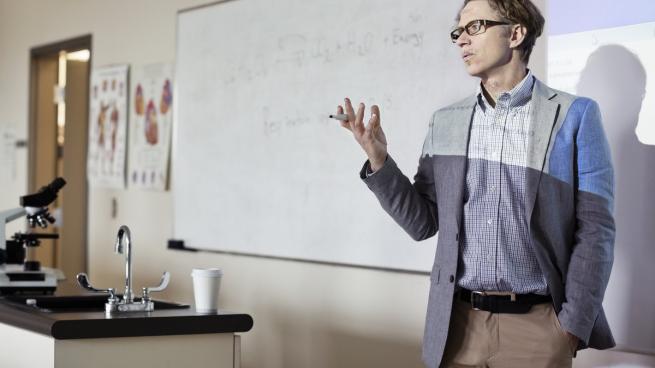Inicio » Uncategorized
Archivo de la categoría: Uncategorized
TOOLS
La posición de still (todavía) y yet (ya)
Ejercicios 7 y 8 de tarea
Meeting an old friend

Listen to the conversation between two old friends to practise and improve your listening skills.
Do the preparation task first. Then listen to the audio and do the exercises.
Preparation
See moreListening B1: Meeting an old friend – preparation
Choose the correct explanation for the words in CAPITAL letters.
Transcript
See moreSelina: Patrick? Is that you?
Patrick: Selina! Hello!
Selina: Well, well. Patrick Eastwood. How have you been?
Patrick: Good. Great, actually. How are you? I haven’t seen you for … how long?
Selina: It’s been ages. At least fifteen years. Wow.
Patrick: Yeah. Wow.
Patrick and Selina: So, what are you doing here?
Selina: Sorry, you go first.
Patrick: OK. What are you doing here? I thought you’d moved to London.
Selina: I was in London for a couple of years. But it didn’t work out.
Patrick: Oh, I’m sorry to hear that. Are you … OK?
Selina: I’m fine! The dream job wasn’t really a dream, you know? Um … and London is great but it’s so expensive. I mean, just the rent on a flat is … uh … crazy expensive.
Patrick: I see.
Selina: So, I came back. I’ve been back now for almost five months. Living back home with Mum and Dad. Which is err … interesting. Um … but anyway, what about you?
Patrick: Me? Oh, nothing new. You know me – ‘Patrick the predictable’. I never left here.
Selina: Oh. And is that …?
Patrick: Oh, I’m very happy. I’m married now. We’ve just celebrated our tenth anniversary.
Selina: No way! You? Married? To …?
Patrick: I don’t think you know her. Her name’s Marigold. And we’ve got two kids. They’re five and eight years old.
Selina: Married and with two kids? Wow!
Patrick: Don’t look so surprised!
Selina: No, no … I’m just amazed how time flies! I’m happy for you. I really am.
Patrick: Thanks. You should really come round to the house one day.
Selina: That would be great. Let’s swap numbers and …
Task 1
See moreListening B1: Meeting an old friend – 1
Are the sentences true or false?
Task 2
See moreListening B1: Meeting an old friend – 2
Write the correct number to fill the gaps.
The first English class

Listen to a teacher give students information about a new course to practise and improve your listening skills.
Do the preparation task first. Then listen to the audio and do the exercises.
Preparation
See MoreListening A1: The first English class – preparation
Put the words in the correct order.
Transcript
See MoreHello, everyone. Hello! It’s nice to see you all here. Welcome to British Life and Language. I am your teacher. My name is Lindsay Black. That’s L-I-N-D-S-A-Y Black. Before we begin, some information about the class.
Our class is in room 13, on the first floor. When you go upstairs, turn left to find the room. Again, that’s room 13.
We have class twice a week, on Monday and Wednesday. Our class begins at 4.30 p.m. and lasts 90 minutes, so we finish at 6 p.m. That’s 4.30 to 6. Please arrive on time, OK?
Also, I have an office hour if you have questions. I’m in office 7B on the second floor. My office hour is Friday at 6 p.m. So, if you have any questions or problems or want to talk to me, it’s Friday at 6 p.m. in office 7B.
We begin next week, on March the 13th. That’s Monday, March the 13th. The course ends on May the 20th. May the 20th is the last day.
I think that’s all … Oh, one more thing. For this course you need the book. Here it is: British Life and Language Level 1 Student’s Book. So, please get a copy of the book. I don’t want to see any photocopies of the book, thank you! Remember, it’s level 1 student’s book. Don’t buy the teacher’s book.
I think that’s all, everyone. I look forward to working with you. See you next Monday!
Task 1
See MoreListening A1: The first English class – 1
Are the sentences true or false?
Task 2
See MoreA conference programme

Read the programme for a management conference to practise and improve your reading skills.
Do the preparation task first. Then read the text and do the exercises.
Preparation
See MoreReading Text
See More
Task 1
See MoreTask 2
See MoreA lecture about an experiment

Listen to the lecture about a science experiment to practise and improve your listening skills.
Do the preparation task first. Then listen to the audio and do the exercises.
Preparation
See More
Transcript
See MoreIn today’s lecture we’re going to be talking about experiments, and I thought it might be interesting for you all to learn about the world’s oldest continuously running laboratory experiment that is still going today. In fact, it holds the Guinness World Record for being the longest-running experiment. This experiment began in 1927 and has been going ever since.
It’s called the ‘pitch drop’ experiment and it was created by Professor Thomas Parnell at the University of Queensland, Australia. Parnell was the university’s first physics professor, and he wanted to show in this experiment that everyday materials, such as pitch, can have quite surprising properties.
You see, when pitch is at room temperature, it feels solid. You can easily break it with a hammer. However, it isn’t in fact solid. At room temperature, pitch is many billions of times more viscous than water, but it’s actually fluid.
In 1927, Professor Parnell took a sample of pitch. He heated it and poured it into a glass funnel. He allowed the pitch to cool and settle – for three years. He then turned the funnel upside down and cut the top off it.
Since then, the pitch has slowly dropped out of the funnel. How slowly? Well, the first drop took eight years to fall. It took another forty years for another five drops to fall. Today it’s been almost 90 years since the experiment started. Only nine drops have fallen from the funnel. The last drop fell in April 2014 and the next one is expected to fall in the 2020s.
The experiment has a tragic story associated with it. Professor Parnell died without seeing a pitch drop. His replacement, Professor John Mainstone, became responsible for the pitch drop experiment from 1961. He held the job for 52 years, and missed seeing the drop fall three times – by a day in 1977, by just five minutes in 1988 and finally in 2000, when the webcam that was recording the experiment suffered a power outage for 20 minutes, during which time the pitch dropped.
The pitch drop experiment is something we can all participate in now. There’s a live web stream that allows anyone to watch the glass funnel and wait for the fateful moment. A similar experiment to the Queensland pitch drop was set up in Dublin, and the video of the moment the pitch actually dropped went viral on the internet. It’s interesting to see how a very slow event can spread news so quickly.
Task 1
See More
Task 2
See More
EL EQUIVALENTE DE ¿NO ES VERDAD?
| Para traducir las preguntas ¿no es verdad?, ¿verdad?, ¿no?, ¿no es así?, con las que se pide asentimiento o confirmación, se repite el pronombre (o el pronombre correspondiente al sustantivo) y se usa el auxiliar que se emplearía para poner el verbo en negativo. |
| Si el primer verbo de la oración es afirmativo, el auxiliar en la pregunta corta estará en negativo. |
| Si el primer verbo es negativo, el auxiliar en la pregunta corta estará en afirmativo. |
| Estudie los siguientes ejemplos. |
| 1.It’s clean, isn’t it? |
| It isn’t clean, is it? |
| 2.There’s time, isn’t there? |
| There isn’t any time, is there? |
| 3.He’s eating, isn’t he? |
| He isn’t eating, is he? |
| 4.They’re going to come, aren’t they? |
| They aren’t going to come, are they? |
| 5.You were writing, weren’t you? |
| You weren’t writing, were you? |
| 6.I have to eat, don’t I? |
| I don’t have to eat, do I? |
| 7.the car works, doesn’t it? |
| the car doesn’t work, does it? |
| 8.Henry likes to teach, doesn’t he? |
| Henry doesn’t like to teach, does he? |
| 9.John’s sister went, didn’t she? |
| John’s sister didn’t go, did she? |
| 10.Your brother wanted to sleep, didn’t he? |
| Your brother didn’t want to sleep, did he? |
| 11.John can win, can’t he?. |
| John can’t win, can he? |
| 12.Mary and I could study, couldn’t we? |
| Mary and I couldn’t study, could we? |
Haz los ejercicios del libro con el profesor

Comentarios recientes